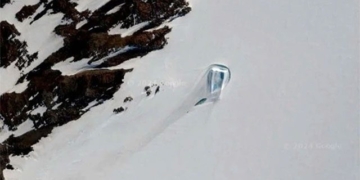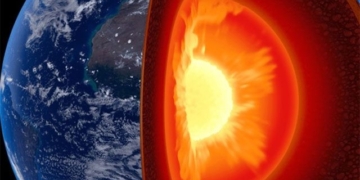A dust grain from an ancient meteorite that fell in Antarctica is described as “coming from a rather unusual place in space-time.”
According to Science Alert, what scientists found in a meteorite in Antarctica is a tiny mineral grain known as olivine, but it is a strange type of olivine that has never been seen before.
Olivine is a silicate mineral containing magnesium and iron, quite common both on Earth and beyond. However, the isotope composition of the olivine in this meteorite is so unusual that it must have been created by another star that died before the Sun was born.

An ancient star exploding into a supernova, scattering material across the universe, including the strange olivine grains found in the Antarctic meteorite – (Graphic image)
Thus, it represents the so-called “Sun precursor grains,” which are incredibly rare.
Sun precursor grains are a type of mineral often referenced in astronomical theories, being rare remnants of ancient stars that are billions of years older than the Sun.
They can provide insights into different stellar environments throughout the galaxy and the types of worlds that could form around those stars.
Astrogeologist Nicole Nevill from the Lunar and Planetary Institute in Houston, USA, led the discovery of these grains in the Antarctic meteorite using atomic probe tomography techniques.
This indicates that this grain has a magnesium isotope ratio different from anything in the Solar System. This magnesium isotope ratio is the highest among grains previously known, suggesting it must have originated from a type of star that later exploded as a supernova, burning hydrogen.
The meteorite containing this treasure is also very ancient, having been found in Antarctica in the late 1970s.
It is a carbonaceous chondrite meteorite that formed from the early days of the Solar System, inadvertently capturing dust grains from a supernova even older than itself.
Its landing in Antarctica is a stroke of luck for humanity, as it has inadvertently preserved a “ticket” into the mysterious space-time region before the Sun’s presence.


















































